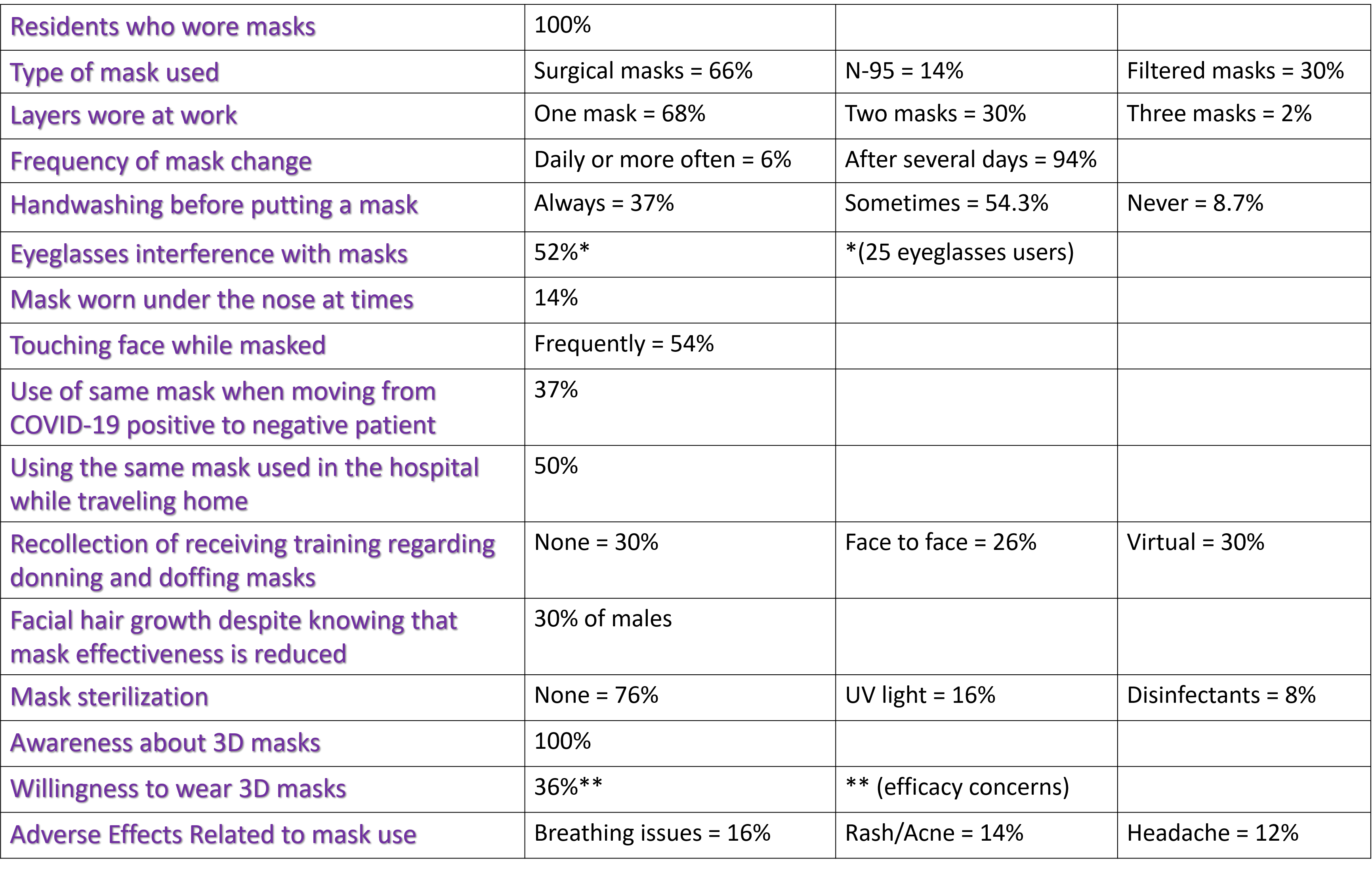Background: The COVID19 pandemic has increased mask demand over 100 fold. The resultant shortage led to the rationing of resources worldwide. We conducted a cross-sectional study seeking to interrogate masking practices among residents through a structured questionnaire.
Methods: A confidential survey link (powered via Survey Monkey online platform) was sent via email to 242 residents in a large regional healthcare network in Eastern Pennsylvania. A total of 50 residents (20.67%) returned the Survey. Of these respondents, 45 residents completed the Survey in its entirety, and 5 skipped one or more questions.
Results: All residents wore masks. The most common ones worn in the hospital were surgical (66 %) and N-95 (14%). 30% regularly used masks with filters. While at work, 68% of the residents routinely used one mask, 30% routinely used 2 layers of masks, and 1 resident (2%) routinely used 3 layers. 94% of the residents reused masks for several days while 3 residents (6%) changed it either daily or multiple times a day. 37% of residents wash hands every time before putting a mask, 54.3% sometimes wash their hands, and 8.7% never wash their hands before masking. At the end of a shift, half the residents went home wearing the same mask used in the hospital. 37% of residents wore the same mask when moving from COVID-positive to COVID-negative patients. 30% of the residents surveyed said that they did not remember getting training about best practices on donning and doffing the masks, 26% got face to face training, and the rest got virtual training. 30% of the males responded that they continued to grow facial hair despite knowing that this makes the mask less effective. 14% of the residents acknowledged having masks worn under their noses in patient care areas; 54% recalled touching their faces frequently or sometimes every day. Of the 25 residents who wore eyeglasses, 52% reported the glasses interfering with the masks. 76 % of residents do not sterilize the mask regularly before reuse, 16% used UV light, and 8% used disinfectants. All residents knew of 3D printed masks, but 36% said they would not wear one due to concerns about efficacy. Adverse effects related to prolonged masking were breathing issues (16%), facial rash/acne (14 %), and headache (12%).
Conclusions: While universal masking was practiced, our study uncovered areas for improvement. Education about mask donning and doffing, especially hand hygiene, is a priority. While mask reuse was common, mask sterilization was not and needs to be encouraged. Best practices training about askingwhen moving from COVID positive to COVID negative patients is essential. Policies on facial hair are required. Eyeglasses are a significant problemwith masking (fogging may lead to frequent touching of the face). 3D printed masks may be a solution, but physicians are wary of the efficacy.Newer mask designs should address the adverse effects of headaches, skin, and breathing problems.

